A backlink profile consists of all the inbound links to your website. These links help search engines determine your site’s authority and ranking. In this guide, you’ll learn what is a backlink profile, why it matters for SEO, and how to manage it effectively.
Key Takeaways
- A backlink profile aggregates all backlinks to a website, impacting its authority and search engine ranking, with quality being crucial for credibility.
- Key elements of a strong backlink profile include varied anchor text, high authority linking domains, and a diverse range of quality backlinks rather than a mere focus on quantity.
- Regular analysis and maintenance of the backlink profile through SEO tools and strategic link-building efforts are essential for sustainable SEO success.
Understanding Backlink Profiles
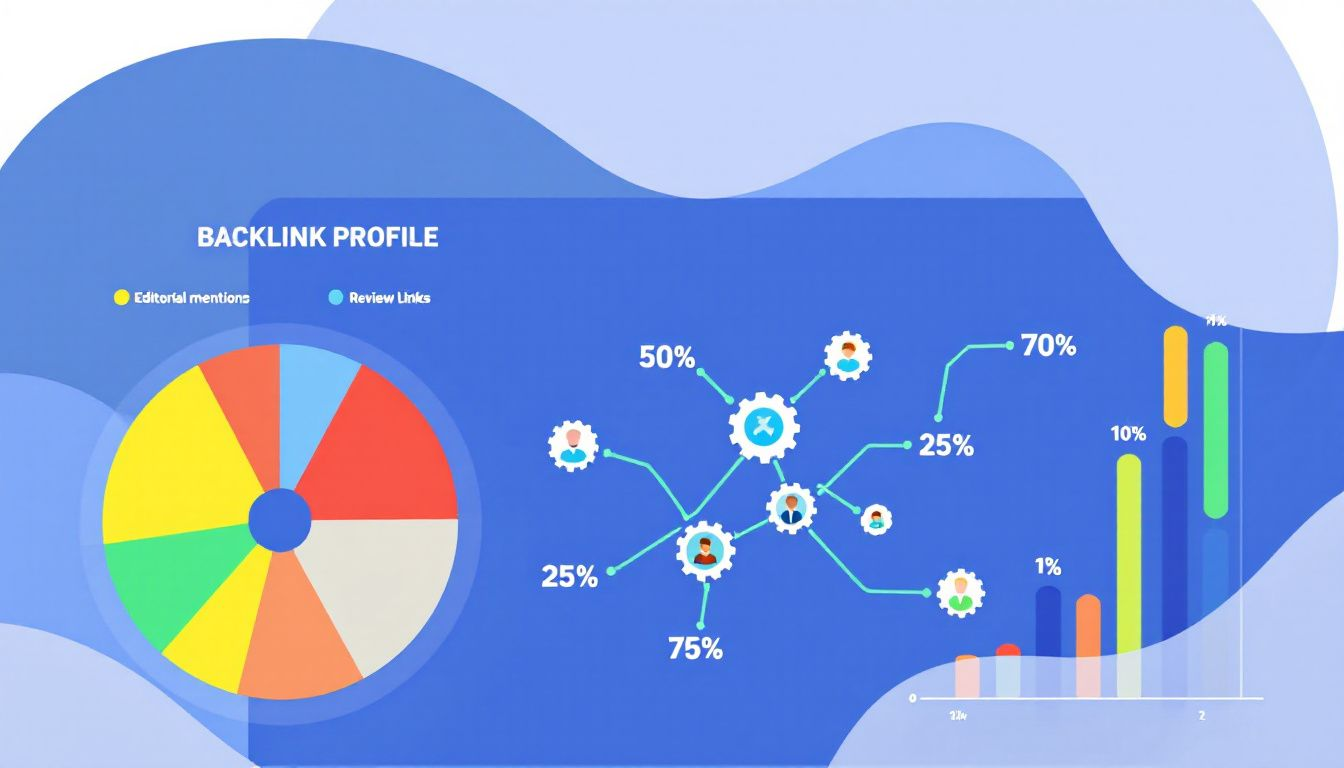
Your website’s backlink profile encompasses the entire assortment of inbound links directed towards it, essentially serving as a comprehensive aggregation of all such backlinks. These inbound connections emanate from various other websites, channeling users directly to your domain and are critical in establishing both the authority and search engine ranking of your site. A diversified collection within this profile often includes an array of link types sourced from significant web entities—spanning dofollow and nofollow links—as well as utilizing assorted anchor text styles.
The integrity of your backlink portfolio profoundly affects how reputable your online platform appears. Search engines interpret a solid configuration featuring high-quality backlinks from credible sites as an indication that yours is a trusted, authoritative destination on the web. On the flip side, having many low-caliber or spammy links tethered to your site could detrimentally impact both standing with search engine algorithms and overall internet credibility.
Conducting systematic assessments of these linking relationships ensures you continue wielding strong influence across cyberspace.
Key Elements of a Backlink Profile
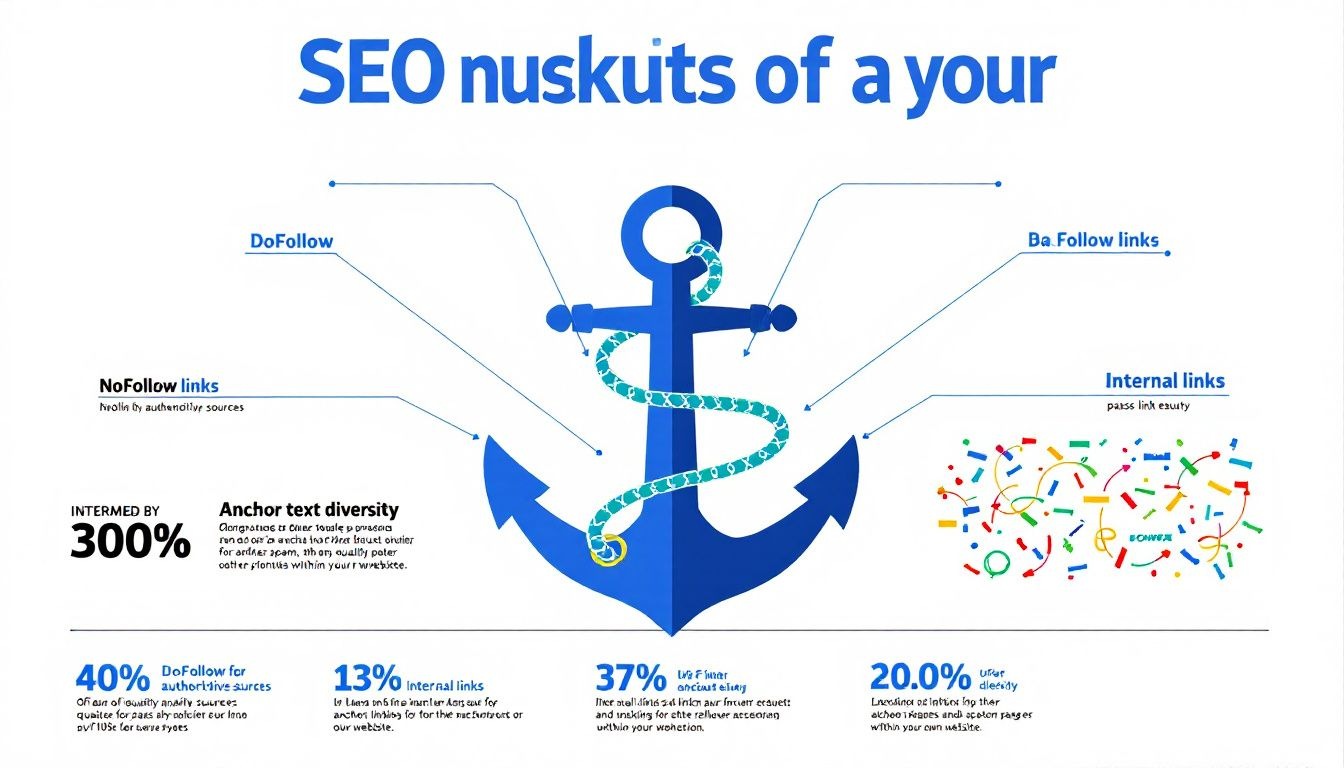
Understanding the crucial components of your backlink profile is fundamental to its effective management. The importance of anchor text cannot be overstated. This clickable hyperlink text provides both users and search engines with insight into the content on the linked page, making varied and organic use of anchor texts beneficial for enhancing your backlink profile’s quality.
Equally imperative are high authority backlinks originating from respected domains. These carry substantial influence and can elevate your website’s position in search engine rankings significantly. Cultivating a diverse array of reputable sources within your backlink portfolio bolsters perceived reliability and stature in relation to search engine assessments.
Prioritizing quality over quantity is vital when it comes to securing backlinks since accumulating an abundance of lower-quality links may erode the credibility associated with your site.
Why Backlink Profiles Matter for SEO
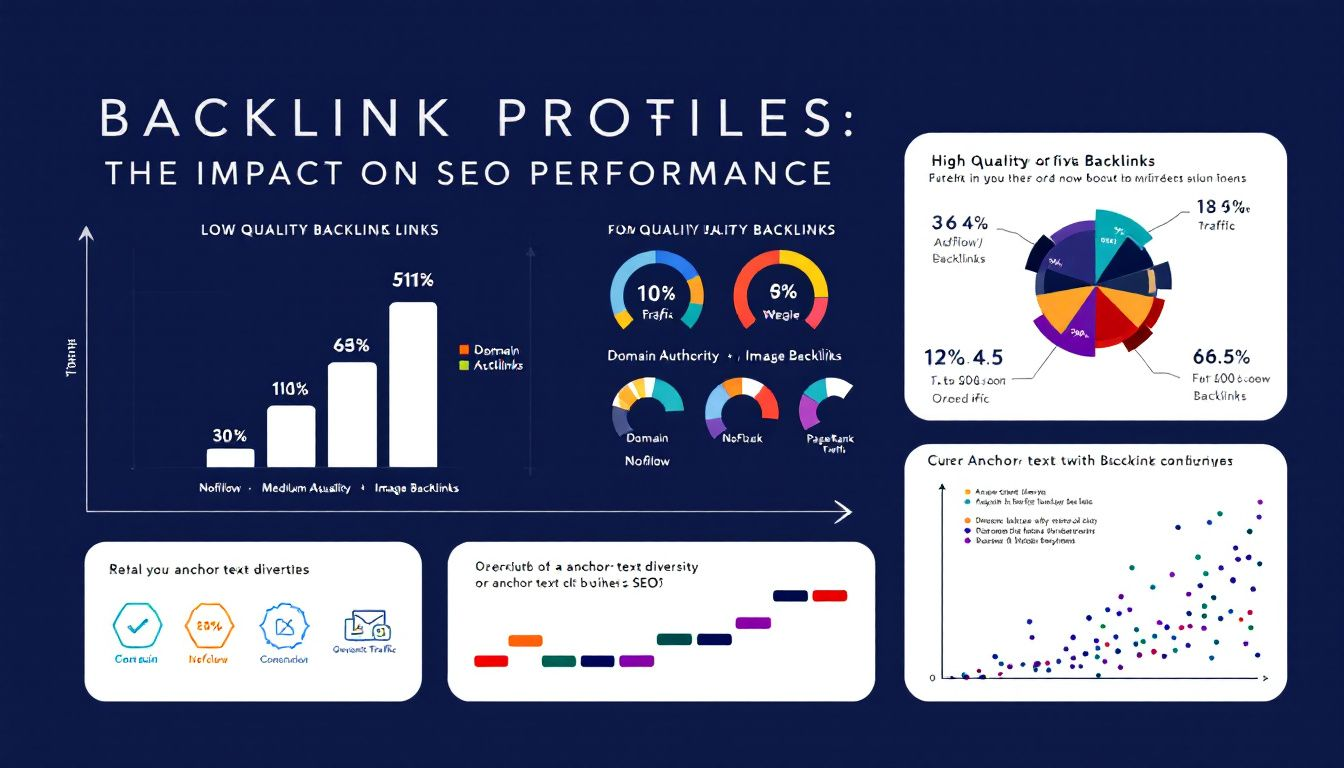
Backlinks serve as commendations from other websites, informing search engines of the credibility and importance of your content. Such endorsements are vital within Google’s PageRank algorithm for ranking purposes, underscoring their significance in search engine optimization (SEO). A robust backlink profile is often seen by Google as an indication that your website is a credible resource.
Incorporating strategies to develop and sustain a strong backlink profile is crucial for effective SEO tactics. Securing backlinks from well-regarded sites can greatly elevate your site’s credibility and its position in search results. Attaining these high-quality links necessitates a strategic approach to link building. Conducting routine checks to identify and remove harmful backlinks is essential for safeguarding the integrity of your SEO endeavors.
Content marketing stands out as an excellent method to garner top-notch backlinks. Producing content that holds value encourages reputable sites to link naturally, which bolsters one’s backlink portfolio. The emphasis should always be on quality rather than quantity when it comes to acquiring links. Fewer but higher quality connections may offer more value than numerous lesser ones.
How to Analyze Your Backlink Profile
To ensure your backlink profile remains robust, it’s critical to engage in persistent oversight and tweak your approach as necessary. Regularly examining the composition of inbound links that direct traffic toward your site is essential for spotting harmful connections and gauging the impact of your link-building initiatives. This examination involves several steps such as utilizing SEO tools for insights, assessing the variety of referring domains pointing at you, and scrutinizing how anchor text is distributed across these links.
By conducting a thorough analysis of the links leading to your website, you gain insight into both their quality and quantity. This not only helps you measure up against competitors, but also guides adjustments within your own SEO strategy. While leveraging SEO tools can provide substantial data about who’s linking back to you, bear in mind that they might not always account for every single backlink impacting your online presence.
Using SEO Tools
For assessing your backlink profile, SEO tools play a crucial role. Platforms such as Semrush and Google Search Console provide extensive functionalities to monitor and scrutinize your backlinks for search engine optimization (SEO) tactics. They provide intricate insights into the volume of backlinks, the caliber of referring domains, and how anchor text is applied.
Third-party instruments like Moz and Serpstat bring formidable capabilities for analyzing backlinks. These utilities are key in pinpointing high authority backlinks, examining the worth of referring domains, as well as tracking the speed at which you gain new links or what’s known as “backlink velocity.”
By leveraging these instruments’ analytical power, you can unearth pivotal intelligence regarding your link-building landscape that empowers you to make strategic decisions enhancing your overall strategy for search engine visibility improvement.
Evaluating Referring Domains
Evaluating the caliber and robustness of backlinks necessitates an analysis of referring domains. Utilize platforms such as Ahrefs, SEMrush, and Google Search Console to accomplish this task efficiently. These platforms yield indicators like domain authority (DA) and page authority that reflect the credibility of incoming links from these domains.
Crucial analytics include both the aggregate quantity of referring domains and their respective volumes of backlinks. Securing a substantial count of reputable referring domains can enhance your site’s standing in search engine rankings, boosting critical SEO metrics significantly.
Regular scrutiny of your array or network of referring domains is instrumental in fostering a sound backlink profile while uncovering prospects for augmentation pertaining to incoming links.
Checking Anchor Text Distribution
The visible component of a hyperlink, known as anchor text, is critical for effective SEO. A diverse and organic array of backlink anchor texts within an optimized backlink profile signals relevancy to search engines while safeguarding against potential penalties. An excessive use of keyword-specific anchors that exactly match or an overabundance of naked URLs can cause the backlink profile to appear contrived.
Maintaining vigilance over the frequency with which certain keywords appear in your anchor text is important to grasp their significance within your backlinks. The aim should be to incorporate target keywords into your anchor texts without excessively optimizing them so as not to jeopardize your standing with search engines through penalties. Periodic assessment and refinement of how you distribute anchor text are crucial steps toward preserving a robust and reputable backlink profile.
Improving Your Backlink Profile
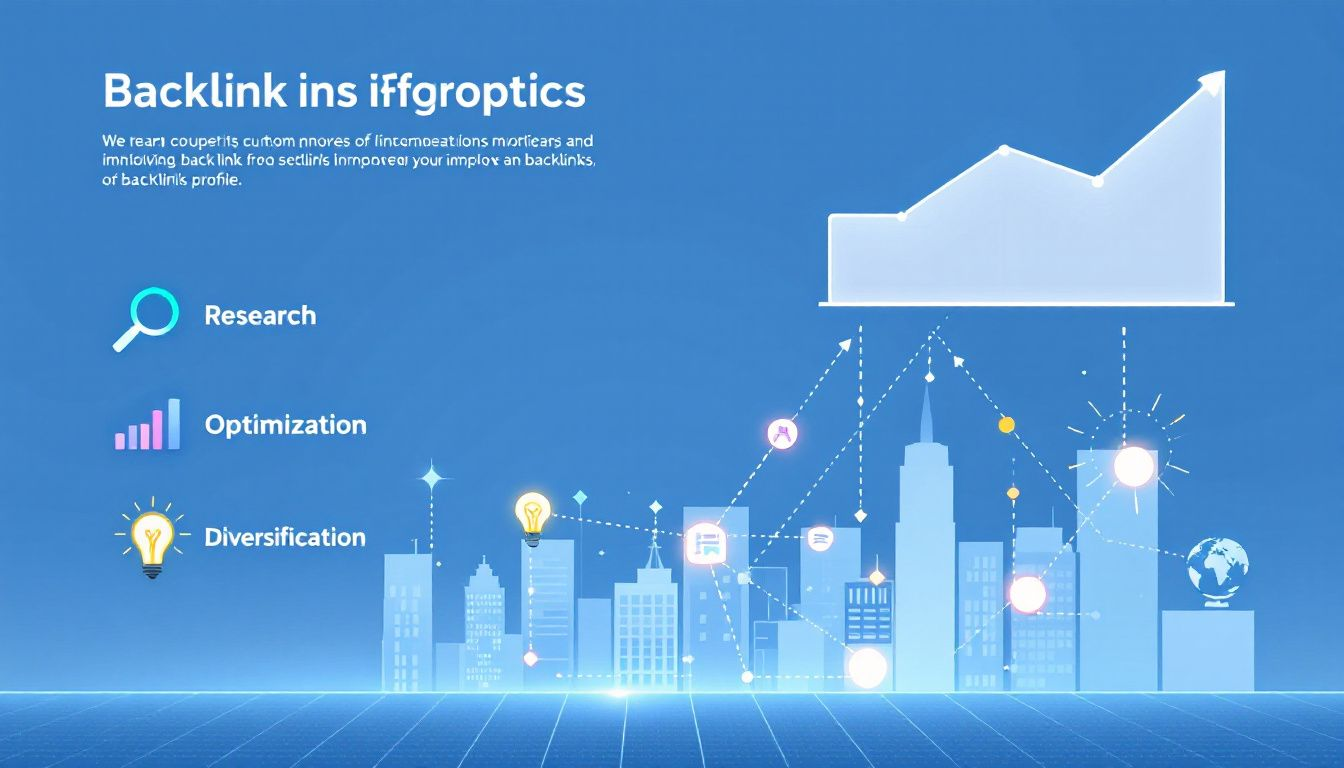
Improving your backlink profile requires consistent strategic effort and implementation. A robust backlink profile greatly boosts your site’s credibility and positioning in search engine results. This task includes acquiring high-quality backlinks, rejecting spammy links, and widening the variety of your link sources.
Concentrating on these aspects is key to establishing a strong backlink profile that bolsters your SEO objectives. Continuously evaluating and enhancing the caliber of your backlinks guarantees that link-building endeavors are congruent with your overarching SEO strategy.
Building High-Quality Backlinks
Incorporating high-quality backlinks is a pivotal component of any robust SEO strategy. It’s essential to garner these links from highly regarded websites that have relevance within your sector, as doing so strengthens the trustworthiness and search engine rankings of your website. When executing link-building endeavors, it’s vital to value quality much more than sheer numbers.
Among the myriad strategies for securing high-quality backlinks, guest blogging stands out. By contributing well-crafted articles on esteemed sites in your industry niche, you can earn valuable links. It’s important that the content you provide through guest posts resonates with its readership and upholds excellence in quality. Pursuing broken link building represents another potent technique. This entails identifying non-functioning links on external websites and suggesting your own material as an appropriate substitute.
To naturally draw superior backlinks toward your site, crafting compelling assets like exhaustive tutorials, engaging infographics, or informative blog entries is advisable. Content forms such as ‘Why posts’ or ‘What posts’ have proven particularly successful at attracting inbound links due to their informativeness and appeal to curiosity—adding variety to sources from which you gain these recommendations helps safeguard against potential Google sanctions too.
Disavowing Spammy Links
Links deemed spammy can drastically damage your website’s standing and its position in search engine results. To safeguard the SEO health of your site, it’s essential to pinpoint and renounce these unwelcome links. When you have backlinks from sources that are notorious for being spammy, they may transmit their detrimental effects to your website. A periodic review of your backlink profile is necessary to detect such links. Additionally, identifying and rejecting unnatural links is crucial, as these can further harm your site’s credibility and rankings.
The utilization of the disavow tool is key in protecting your site’s ranking against the adverse influence of harmful backlinks. Neglecting to repudiate toxic links could permit them continuous detriment to your site’s SEO stature.
It’s imperative to systematically inspect and reject spammy links as part of sustaining an unblemished backlink profile for ongoing optimal performance.
Diversifying Link Sources
Establishing a diverse backlink profile is essential for an organic and robust SEO strategy. Ensuring that your link sources are varied contributes to creating a natural-looking link profile, which is critical for maintaining long-term credibility of your website and steering clear of sanctions from search engines.
Initially:
It’s important to broaden the range of your link origins by securing backlinks from multiple domains and various types of websites. This should encompass blogs, news outlets, professional forums backlinks, as well as social media networks. By widening the scope of where your backlinks come from, you’ll boost the trustworthiness of your site while minimizing potential penalties issued by search engines.
Subsequently:
In order to achieve diversity in your link origins, aim at obtaining backlinks specifically from:
- Blogs
- News platforms
- Professional circles
- Social media channels
Doing so will not only augment the authenticity and standing of your website, but also safeguard against possible punitive actions taken by search engines due to an unnatural looking backlink structure.
Monitoring Backlink Velocity
The rate at which new backlinks are added is known as backlink velocity. It’s advisable to gain these links gradually and consistently in order to stay credible and not alert search engines of any unusual activity. Rapid increases in the number of acquired backlinks may set off alarms, potentially resulting in punitive measures.
Ensuring a steady expansion of your website’s backlink profile is crucial for maintaining enduring authority over time. Keeping an eye on the pace at which you’re earning new links can help validate the success of your SEO tactics, guaranteeing that your approach to link building looks organic and trustworthy.
Having a diverse portfolio consisting of both dofollow and nofollow links helps maintain this natural appearance, steering clear from drawing undue attention or scrutiny.
Common Mistakes to Avoid
Maintaining an effective SEO strategy necessitates careful backlink management and avoiding certain pitfalls. Obtaining links from websites with low authority is a mistake that could erode your site’s trustworthiness and negatively affect its search engine rankings. Another error involves the excessive use of exact match anchor text, which may alert search engines to possible manipulative behavior and result in sanctions.
The perception of rapid backlink accumulation can also raise red flags for search engines, as it often resembles artificial manipulation tactics leading to penalties. Utilizing only a few link-building strategies can restrict the potential variety and impact of your backlinks.
By concentrating on securing diverse high-quality backlinks while avoiding over-optimization of anchor texts, you can steer clear of these common missteps in link building for search engines.
Tools for Managing Your Backlink Profile
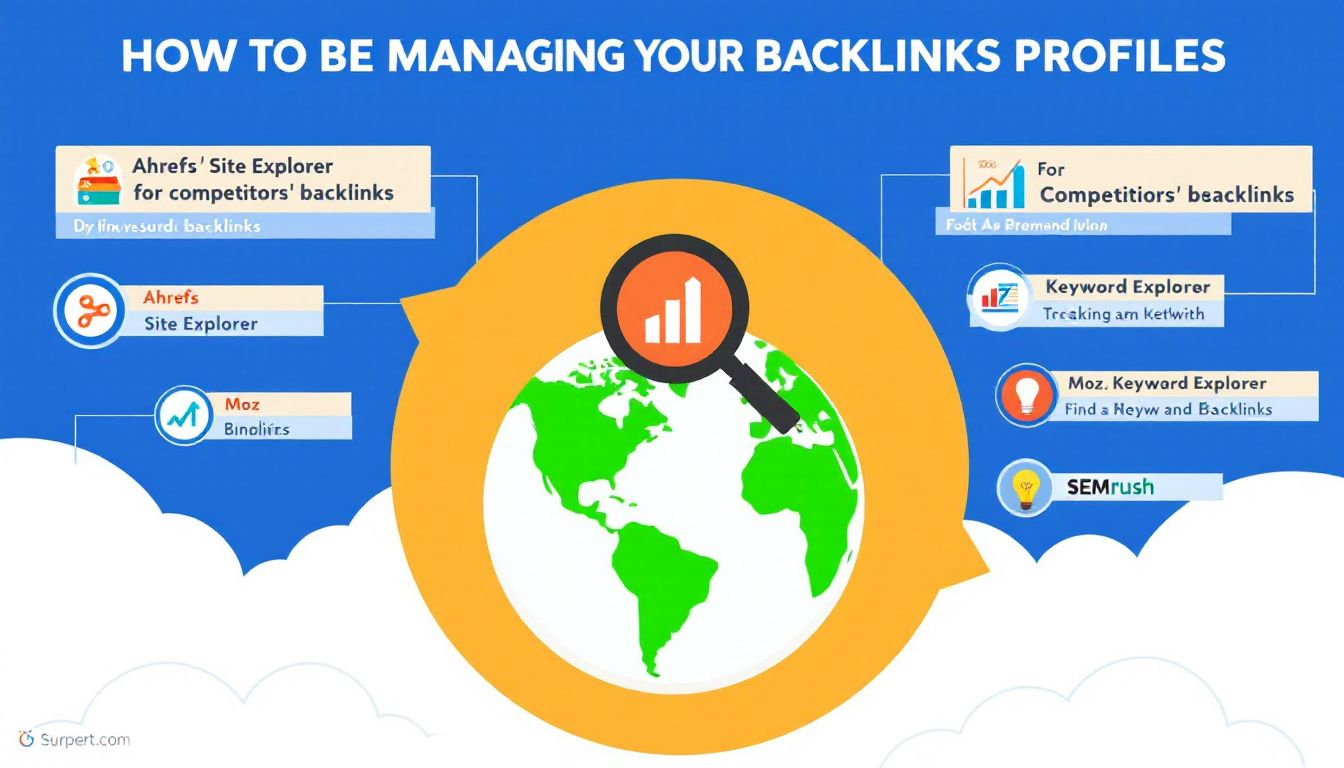
To effectively manage your backlink profile, the proper tools are essential. Ahrefs stands out as a comprehensive option for analyzing backlinks and includes a content explorer that can spot instances where your brand is mentioned without links. Semrush offers another competitive suite of tools for uncovering new backlinks and provides functionality to monitor and organize outreach initiatives.
For those seeking cost-effective solutions in backlink analysis, Majestic delivers key metrics such as total number of backlinks and the variety of referring domains available. Alternatively, Moz Link Explorer allows users not only to scrutinize competitors’ backlink strategies, but also gives insight into how they employ anchor text within their profiles.
Outreach efforts can be streamlined via Pitchbox or Respona, both providing systematic workflows alongside ready-to-use templates tailored for diverse link-building tactics. HARO presents an avenue by which one can engage with media professionals and bloggers potentially leading to acquisition of high-quality inbound links. Selecting these instruments wisely so that they complement your existing processes will markedly enhance proficiency in managing your link infrastructure.
Summary
In essence, for a robust SEO strategy to bear fruit, maintaining an impeccable backlink profile is critical. This component acts as a testament to your website’s stature and trustworthiness from the standpoint of search engines. Comprehending the fundamental aspects of a backlink profile—its significance, methods of assessment and enhancement—can profoundly boost your site’s visibility in search results.
It is vital to conduct periodic audits on your backlink profile with proper tools while steering clear of frequent errors in order to uphold its integrity. Prioritizing quality over quantity will pay dividends. Cultivating a varied and substantial backlink portfolio lays down solid groundwork for all SEO initiatives you undertake. Start optimizing your backlinks today and observe how it elevates your ranking across various search engines.
Frequently Asked Questions
What is a backlink profile?
The aggregate of links pointing to your website, inclusive of their quantity, the anchor text used, and their overall quality, comprises your backlink profile. This profile plays a crucial role in determining your rankings on search engines.
It is vital for improving your web presence and establishing authority to comprehend and refine this backlink profile effectively.
Why is a well-maintained backlink profile important for SEO?
A well-maintained backlink profile is essential for enhancing your website’s authority and visibility, which directly influences your search rankings. This improvement in rankings can lead to increased organic traffic and better overall performance of your SEO efforts.
What factors contribute to a backlink profile?
The robustness of a backlink profile depends on several elements including the mix and quantity of referring domains, the application of anchor text, as well as the balance between dofollow links and nofollow links.
To improve this backlink profile even more. It’s important to ensure there is diversity in your link sources and that social signals are being taken into account.
What is the significance of anchor text in a backlink profile?
Anchor text plays a significant role in a backlink profile by providing context for both users and search engines regarding the linked page’s content.
It enhances user experience and improves search engine optimization by signaling relevance.
What are naked URLs and how do they affect a backlink profile?
The use of naked URLs, where the URL is provided without any accompanying descriptive text, aids in creating a varied and natural backlink profile. Such diversity supports search engine optimization efforts by improving the authenticity of your link profile.




